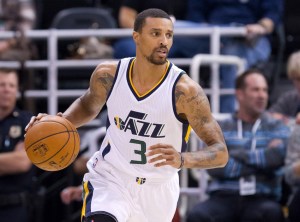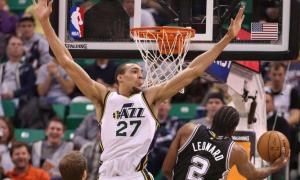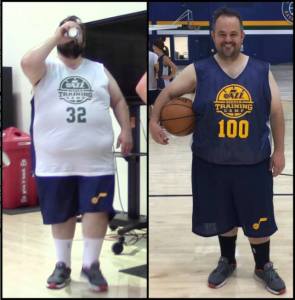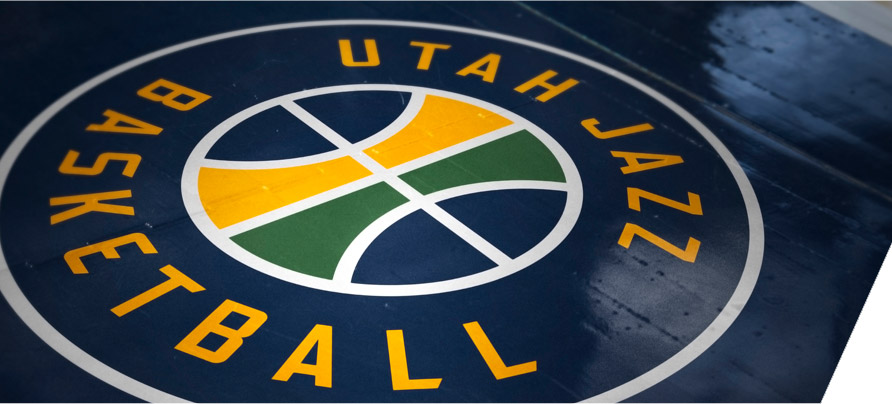San Antonio Spurs fans may have a good idea about who the Utah Jazz are after the Spurs’ recent loss and because of the many staff and players with the Jazz that also spent time in San Antonio.
But to dive a bit deeper into the team that calls Salt Lake City home, I talked to Jody Genessy, a longtime friend and collaborator of Project Spurs and the Jazz beat writer for the Deseret News.
1. My favorite part about the start of every season is the early overreaction. Prior to the Spurs game, I read a lot about the “slow start” for the Jazz. Do you feel like that’s all just a part of the transition to adding so many new pieces to the roster and in key roles?
1. It was interesting to hear Jazz coach Quin Snyder say he wasn’t too concerned about the results at this point of the season. We heard him repeat that type of refrain many times in the first couple of years after he took the job because the team was in a rebuilding mode. It was understandable that he was more focused on establishing good habits before getting too worked up about results. The problem this year, if it even is a problem, is that people got all worked up about how this Jazz team could be a 50-win squad and return to the playoffs for the first time since the Spurs easily swept them out of the first round in 2011. But, as was so often the case last season, the injury bug really took a toll on the Jazz before the 2016-17 campaign began. Gordon Hayward broke a finger. Derrick Favors had knee issues. Alec Burks was slow to recover from a June surgery. Boris Diaw suffered a leg contusion. So suddenly, the Jazz were without their best two players (Hayward and Favors), a key wing (Burks) and a veteran they expect to help shore up their bigs rotation and locker room (Diaw). There’s no need to panic this early into the season, so it was smart of Snyder to emphasize improvement and team chemistry more than worrying about wins and losses. Even with injured players galore, the Jazz have only had one clunker of a game (an 88-75 loss to the Clippers in L.A.). Utah played Portland well in the opener on the road and has turned it up a notch this week with back-to-back wins over the Spurs and Mavericks. Maybe Snyder is on to something. It will be interesting to see how long, if at all, it takes the Jazz to come together again when Hayward returns in the next little while. The NBA is a constant adjustment game.
2. He’s only played five games with the Jazz, but what are your thoughts so far on former Spur George Hill?

Some here in Salt Lake City are suggesting that George Hill should be voted in as governor. Incidentally, he has friends in Utah and had already done youth basketball camps here before being traded to the Jazz from the Pacers. That helped Hill adapt to a different type of NBA community right off the bat. His style is perfect for Snyder’s system. He’s a good passer, can score in multiple ways, has great ball security and plays excellent defense. He’s also stepped into a leadership role the team really needed with Hayward being sidelined for the first weeks of the season. Hill looks like an All-Star-type player right now. That’s huge for the Jazz because they haven’t had a consistently good point guard since Deron Williams played here five years ago. The Jazz’s point guard platoon was very sketchy last year with projected starter Dante Exum sidelined all season. Utah’s starter for the second half of the 2015-16 season (Shelvin Mack) is now the team’s third point guard. Hill and Exum are both playing well (as is Mack, really), so a weakness is now a strength. By George, Utahns are all over this Hill. (OK, that was multiple levels of horrible. Let’s move on. Please!)
3. I’d love to get your thoughts on the many comparisons of the Jazz to the Spurs? Do you feel like that’s just coincidental with personnel that came from San Antonio or do you think the franchise sees the Spurs’ model as one to try to emulate?
What comes around goes around. Over the years, Gregg Popovich has openly commented about how he modeled the Spurs system after Jerry Sloan’s old Jazz system. It’s interesting to see Utah return the favor years later. Both teams have always been solid organizations and exemplary role models for small-market teams. But it’s clear that Jazz ownership decided it’d be smart to tap into the Spurs wizardry, a process that began when R.C. Buford’s right-hand man, Dennis Lindsey, was hired to replace Kevin O’Connor as Utah’s general manager four years ago. Hiring Quin Snyder, whose coaching comeback began in earnest with the Austin Toros, was a no-brainer for Lindsey. He has a sharp basketball mind and soaked in knowledge from Pop for three years. Pop even jokes that Snyder would give him ideas about how to run pick-and-roll variations. Watch the Jazz, and you’ll see similarities in style with a lot of ball movement and defensive intensity. Getting Hill and Diaw was the next step in the assimilation process, and we’re one Manu Ginobili trade and an Alamo replication away from completely turning Salt Lake City into San Antonio West. If you’re going to model your team after one franchise, it totally makes sense to model it after a team that modeled it after your team (but had much more success).
4. How important was it for the Jazz and Gobert to come to terms on an extension early, and what does it mean for the future of the franchise?

5. Again, it’s obviously very early, but the Jazz have been praised for their additions over the offseason, and that’s not just because Boris brings a nespresso machine with him everywhere. How far away do you think the Jazz are from competing with some of the Western Conference’s top contenders? What will it take to get there?
Let me paraphrase Doc Rivers again to answer that. The Clippers coach believes the Jazz might have had the best offseason in the NBA. Sure, he credits Golden State for getting Kevin Durant, but Utah’s veteran acquisitions are likely to do more for the Jazz’s improvement than KD could possibly do for the Warriors. As I wrote, the addition of George Hill was huge for the Jazz’s point guard platoon. He’s perhaps the most underrated playmaker in the NBA. Joe Johnson isn’t quite as old as dirt, but close. Still, his 29-point explosion on opening night against Portland and his timely scoring punch in proceeding games shows that he’s still very dangerous. Maybe not all of the time, but enough to give the Jazz much more of a spark off the bench (when Hayward returns) than they had last year. And Diaw, well, you guys know Diaw better than we do. He’s struggled early this season because of a leg contusion, but when healthy he can be such a benefit to a team because of his wonderful passing, versatility and leadership. To sum that up, the Jazz improved all three position groups (point guards, wings and bigs) this offseason and became much more experienced after being a talented-but-very-green team the past two years. Who knows if this team has the makings of an NBA Finals contender, but the Jazz certainly have the foundation for a team that can win a playoff round or two this year and maybe even more in the next couple of years. They just need to stick together and let the experience-gaining process take place. Honestly, it’s a good time to be a Jazz fan.

Thanks to Jody for working with us on this. Be sure to read his blog linked above and also follow him on Twitter at @DJJazzyJody. For more on the Jazz, be sure to also read Paul Garcia’s pice on how the Jazz executed late down the stretch in Tuesday’s game.
Add The Sports Daily to your Google News Feed!
